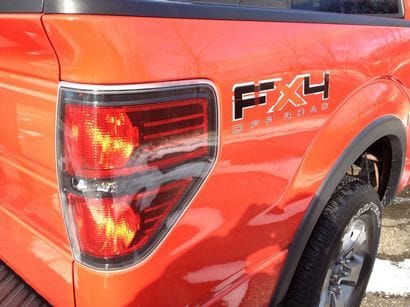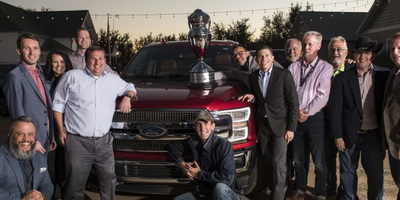A week spent in the twin turbo version of the best selling truck in America
Pros:
Handsome exterior
Nicely styled interior
Smooth switchgear
Quiet ride
Cons:
Top end models can get pricey
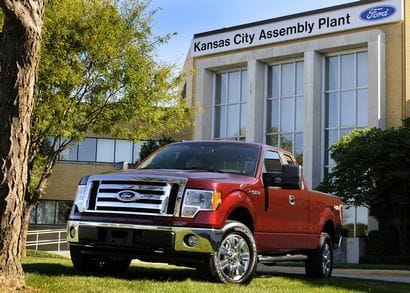
Keeping Ford first
Supplanting a car-based model introduced in 1941, the first Ford F-Series truck was introduced in 1948. Since that time, the F-Series has continued, unabated, through twelve generations.
What was once little more than a simple truck with a body sporting integrated headlights and a flat, one-piece windshield has morphed into a lineup of mythic proportions.
Think about it. The F-150 alone is available in ten trim levels. While that figure might impress, it doesn’t stop there. Add to that three distinct cab configurations, three different box sizes, three engine choices, two drivetrain options and up to ten rear axle ratios and the combinations alone are mind-boggling – and that’s before you’re faced with choosing from a long list of interior and exterior options.
For the F-150, prices range from $24,295 for an entry level model to over $50,000, while a Super Duty F-450 King Ranch can top 70 large.
The icing on the cake is that the F-Series has been the best-selling full-sized pickup in the US of A for over thirty years, with over 33 million built since 1948 while contributing greatly to Ford’s bottom line.

Twelve and counting
The latest generation F-150 was introduced at the North American International Auto Show in January of 2008 and production commenced in October of that year.
Styling for the F-150 was placed on the shoulders of the company’s truck design team – a group responsible for not only making the truck look more macho, but giving it better aerodynamics as well.

“Not only did we make the F-150 more aerodynamic and fuel efficient, we also improved upon its tough truck image in a way customers will appreciate,” said Pat Schiavone, Ford truck design director. “The notion that vehicles need to be jelly bean shaped to be aerodynamic is a myth. You can take any vehicle design and tune it to be more aerodynamic. It’s something of a black art, but the new F-150 is proof that it works.”
The results of their efforts are twofold: our F-150 SuperCrew 4X4 with a 5.5 foot box has the lowest coefficient of drag – 0.416 – of comparable configurations and is fully 6 percent lower than a comparable 2008 model. In addition, it moves Ford another step away from the “jelly bean” shape Schiavone speaks of that was the hallmark of the ninth generation F-150 – a design that allowed both Dodge and Chevrolet to steal sales from the Dearborn-based manufacturer.

Interior
“Customers tell us that they spend an awful lot of time conducting business from their trucks, so we’ve worked hard to ensure the new F-150’s interior is both functional and comfortable,” said Mike Arbaugh, F-150 interior design chief. “We raised the bar on ourselves... and brought home the new trucks… that help the new F-150 interior look like it’s been ‘built,’ rather than designed.”
Although not nearly as Audi-esque as the Explorer (another Arbaugh effort), one has to remember that the F-150 is, after all, a pickup truck.
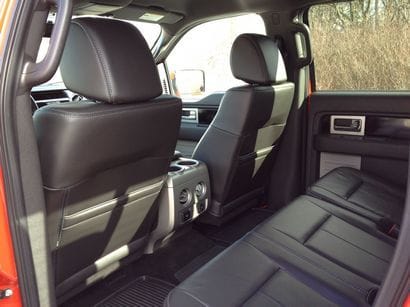
Inside, soft touch surfaces abound, with matte black dash surfaces contrasting nicely with brushed silver metal trim. The backlit instrumentation is easy to read in any light while the instrument panel, center stack and passenger air bag cover are flanked by the F-150’s signature round air vents.
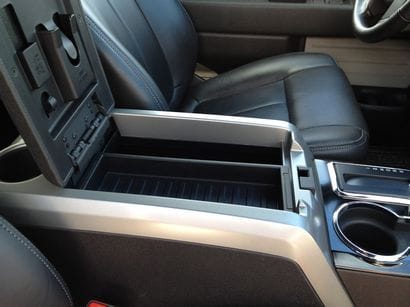
But trucks, after all, need to be functional as well. In the case of the F-150, that translates into such niceties as a multi-tiered, lockable center console large enough to stow two or more small laptops as well as more than 30 storage areas designed to accommodate everything from cell phones to gate access cards.
Five adults will also find an F-150 Supercrew’s cab to be more than accommodating. The driver and front seat passenger have 41 inches of headroom, 41.4 inches of legroom and 60.5 inches of hip room. Riding in back is hardly a compromise, either, as passengers there will find 40.3 inches of headroom, 43.5 inches of legroom and a whopping 64.6 inches of hip room.
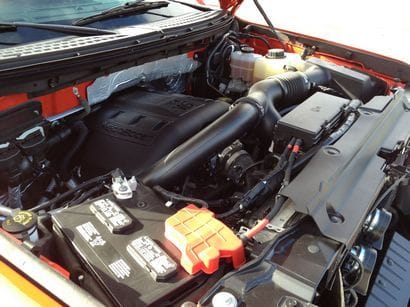
Under the hood
What separates this particular F-150 from anything else out there is what lies under its hood: an aluminum block and aluminum head 3.5-liter twin turbocharged, direct-injection V6 that produces 365 horsepower at 5,000 rpm and a stunning 420 lb.-ft of torque at a stump-pulling 2,500 rpm.
After driving it, we can see why Ford touts its fuel efficiency, but it really is more than that. Looking at its $1,095 premium over the standard V8, it’s hardly justified given the fact that it offers just a 1mpg/2mpg/1mpg city/highway/combined advantage in gas mileage.
But the fact that the EcoBoost is lighter, quicker , with five more horsepower and 40 more lb.-ft. of torque means it’s a much more well-rounded and versatile pickup.
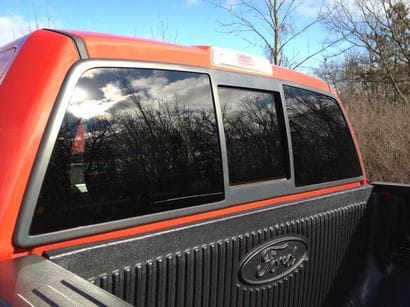
Equipment
To say that our SX4 4x4 Supercrew was well equipped would be an understatement. Its standard equipment included a six-speed automatic transmission, power driver’s seat, windows, locks and mirrors. Automatic headlights, fog lamps, tilt and telescoping steering wheel, SYNC infotainment with satellite radio (with a 4.2 inch LCD screen) and air conditioning were also standard.
Other features included a 2-speed transfer case, electrically locking rear axle differential, an electric shift-on-the-fly 4x4 system, a trailer towing package, skid plates and 4-wheel disc brakes.

Our FX4 was equipped with the “Preferred Equipment Package 505A which adds the EcoBoost engine. It also came with the FX Luxury Package that includes power adjustable pedals, a power sliding rear window, body-colored power folding heated side mirrors with built-in turn signals, automatic climate control, CD changer, remote start, rear view camera, reverse sensing system and heated front seats with power added to the passenger side.
Base price of the FX4 model was $41,330 with the rapid spec package adding another $2,325. With destination and delivery charges of $995 it brings the total new car selling price to exactly $44,650.

On the road
In everyday driving the F-150 4x4 Supercrew FX4 feels well-planted on the road. The fact that it’s a truck means that its suspension doesn’t soak up the potholes and railroad tracks nearly as well as unibody-based vehicles such as the Ford Explorer. But with that being said, cabin noise is amazingly quiet at all speeds – due in no small measure to new power train mounts, a new acoustic headliner, the use of a Quiet Steel dash panel, a single-piece substrate under the instrument panel and expanded absorber on the engine side of the dash panel to limit noise from the road and engine compartment.
Keep in mind that at 5,615 pounds it’s hardly something you’ll feel like tossing around, but then again drivers so inclined will probably not include an F-150 on their shopping lists, anyway.

The Bottom Line
After driving the F-150 EcoBoost for a week, it’s easy to see why Ford’s F-Series remains the best-selling pickup line in America.
It’s also easy to see why a high percentage of buyers are opting for the twin-turbocharged V6 engine. And while they may not see a huge difference in fuel economy, the advantages in performance - from acceleration to trailer towing - should help seal the deal.
It looks to us like Ford has yet another big winner on its hands.


